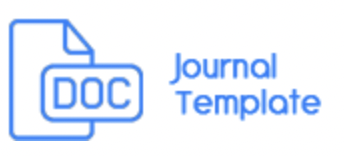Can Religiosity Reduce Corruption Intention In Civil Servant?
DOI:
https://doi.org/10.18326/ijip.v5i2.237Keywords:
Religiosity, Corruption, Corruption Intention, Aceh Government, Civil Servants.Abstract
Aceh Province is an area that has special autonomy and authority in regulating regional policies. One of them is regional financial management based on facts that are vulnerable to corruption. Corruption is a deviant behavior that is manifested from misuse of tasks for personal gain, other people and institutions. Corruption is an act that is prohibited by religion, but corruption behavior still occurs. Religiosity should be an individual defense to not commit corruption. The purpose of this study was to determine the relationship between religiosity and the intention of corruption among civil servants in Aceh provincial government agencies. This research uses quantitative research method with incidental sampling technique. The sample in this study were 350 respondents (n = 350) from eight Aceh provincial government agencies. The results of this study indicate that there is a negative relationship between religiosity and corrupt intentions of civil servants, with the meaning that the higher the religiosity, the lower the intention of corruption.
References
Abdel-Khalek, A. M. (2010). Quality of life, subjective well-being, and religiosity in muslim college students. Quality Life Research, 19, 1133-1143. DOI: 10.1007/s11136-010-9676-7.
Abidin, Z. (2017). Perilaku korupsi: ikatan psikologi sosial Indonesia. Akses melalui http://berita.ikatanpsikologisosial.org/index.php/perilaku-korupsi/.
Ajzen, I. (1991). The theory of planned behavior.Organizational Behavior and Human Decision Process, 50.179-211.
Ajzen, I. (2011). The theory of planned behavior: reactions and reflections. Psychology & Health, 26(9), 1113-1127. DOI: 10.1080/08870446.2011.613995.
Amir, I. D., & Cahyono, I. (2011).Permasalahan otonomi khusus di Aceh dan Papua.Jakarta Selatan: Yayasan Tifa.
Anti Corruption Clearing House.(2016). Sejarah panjang pemberantasan korupsi di Indonesia.Akses melalui https://acch.kpk.go.id/id/artikel/fokus/sejarah-panjang-pemberantasan-korupsi-di-indonesia.
Anti Corruption Cleaning House. (2017). Data statistik: tindak pidana korupsi berdasarkan wilayah. Akses melalui https://acch.kpk.go.id/id/statistik/tindak-pidana-korupsi/tpk-berdasarkan-wilayah.
Austin, T. (2016, Juni 25).Aceh peringkat 10 rawan korupsi.Waspada.Akses melalui http://waspada.co.id/aceh/aceh-peringkat-10-rawan-korupsi/.
Bai, B., Liu, X., & Kou, Y. (2014). Belief in a just world lowers perceived intention of corruption: the mediating role of perceived punishment, 9(5). https://doi.org/10.1371/journal.pone.0097075.
Cahyono, H. (2016). Evaluasi atas pelaksanaan otonomi khusus aceh: gagal menyejahterakan rakyat dan sarat konflik internal.Akses Melalui ejournal.lipi.go.id/index.php/jpp/article/viewFile/227/101.
Djelantik, S. (2008).Korupsi, kemiskinan dan masalah di negara berkembang.Jurnal Administrasi Publik, 5(1), 18-41.
Fishbein, M., & Ajzen, I. (1975). Belief, attitude, intention, and behavior: an introduction to theory and research. Reading, MA: Addison-Wesley.Akses melalui http://people.umass.edu/aizen/f&a1975.html.
Hamzah, A. Dkk. (2007).Muslim religiosity & personality assesment: prototype for nation building. Malaysia: Institut Pengajian Sains Sosial.
Ko, K., & Moon, S. (2014). The relationship between religion and corruption: are the proposed causal links empirically valid. International Review of Public Administration, 19 (1), 44-62, http://dx.doi.org/10.1080/12294659.2014.887353.
Khan, Z. A. (2005). Islam: a deen not mere religion. The Dialogue, 4(1), 97- 108.
Kumolohadi, R. (2013). Exploring values, integrity and anticorruption of Javanese government officer.International Journal of Science Humanity, 3(2), 151-155. DOI: 10.7763/IJSSH.2013.V3.216.
Kumolohadi, R., & Budiharto, S. (2014). Strengthening anti corruption character on leader through prophetic training and couseling.Institute of Research Enggineers and Doctors.DOI: 10.3850/978-981-07-8859-9_63.
Koppelman, A. (2009). Corruption of religion and the establishment clause.Journal of Law Review, 50(6), akses melalui http://scholarship.law.wm.edu/wmlr/vol50/iss6/2.
Lau, H, C.,Rogers, R, D., Haggard, P., &Passingham, R. (2004). Attention to intention. EScience, 303, Issue 5661, 1208-1210.
Liang, Y., Liu, L., Tan, X., Huang, Z., Dang, J., & Zheng, W. (2016). The effect of self-esteem on corrupt intention: the mediating role of materialism. Frontiers in Psychology, 7. DOI: 10.3389/fpsy.2016.01063.
Manara, U, M. (2016). Normalisasi korupsi: tinjauan psikologi. Proceeding Seminar Nasional & Call for Paper Improving Moral Integrity Based on Family. Fakultas Psikologi Universitas Merdeka Malang.
Martha, A, E., & Hastuti, D. (2013), Gender dan korupsi(pengaruh kesetaraan gender DPRD dalam pemberantasan korupsi di Kota Yogyakarta). Jurnal Hukum IUS QUIA IUSTUM, 20(4), 580-601.
Noor, M. (2012). Memahami desentralisasi Indonesia. Yogyakarta: Interpena.
Nurdin, A., Hakim, L., Mulia, M., &Khairizzaman. (2012). Syariat islam dan isu-isu kontemporer. Banda Aceh: Dinas Syariat Islam Provinsi Aceh.
Prabowo, H. Y. (2014). To be corrupt or not to becorrupt understanding thebehavioral side ofcorruption in Indonesia. Journal of Money Laundering Control, 17(3), 306-326.DOI 10.1108/JMLC-11-2013-0045
Rabl, T. (2011).The impact of situational influences on corruption in organizations.Journal of Business ethic, 100, 85-101. DOI: 10.1007/s10551-011-0768-2.
Rabl, T., & Kuhlmann, T, M. (2008).Understanding corruption in organizations development and empirical assesment of an action model.Journal of Businessthics,82, 477-495. DOI: 10.1007/s10551-008-9898-6.
Salama, N. (2014). Motif dan proses psikologis korupsi. Jurnal Fakultas Dakwah Semarang, 41(2), 149–164.
Sofia, A. I. (2011). Pendidikan anti-korupsi untuk perguruan tinggi. Jakarta: Kemendikbud.
Subandi, M. A. (2013). Psikologi agama dan kesehatan mental.Yogyakarta: Unit Publikasi Fakultas Psikologi UGM.
Sugiyono. (2016). Metode penelitian kuantitatif, kualitatif dan R&D. Bandung: Alfabeta.
Tan, X., Liu, L., Huang, Z., Zhao, X., &Zheng, W. (2014). The dampening effect of social dominance orientation on awareness of corruption: moral outrage as a mediator. Journal of Social Indic Res, 125, 89-102. DOI: 10.1007/s11205-014-0838-9.
Transparency International. (2016). Corruption perseption index. Akses pada tanggal 24 April 2017 melalui https://www.transparency.org/news/feature/corruption_perceptions_index_2016 ).
Umam. (2013). Pandangan islam tentang korupsi. Jurnal Taswf Dan Pemikiran Islam, 3.
Wade C., & Tavris, C. (2007).Psikologi, (edisi 9 jilid 2) (Terjemah, B. Widyasinta). Jakarta: Penerbit Erlangga.
Wahyuni, Z. I., Adriani, Y., &Nihayah, Z. (2015).The relation between religious orientation, moral integrity, personality, organizational climate and anti corruption intentions in Indonesia.International Journal of Social Science and Humanity, 5(10), 860-864. DOI: 10.7763/IJSSH.2015.V5.570.
Downloads
Published
Issue
Section
License
Copyright (c) 2023 IJIP : Indonesian Journal of Islamic Psychology

This work is licensed under a Creative Commons Attribution-ShareAlike 4.0 International License.

 Indonesian Journal of Islamic Psycology is licensed under a
Indonesian Journal of Islamic Psycology is licensed under a 


